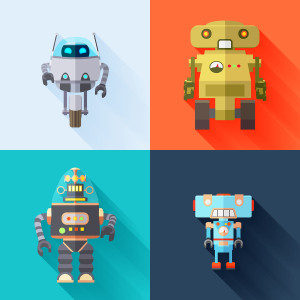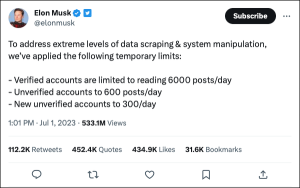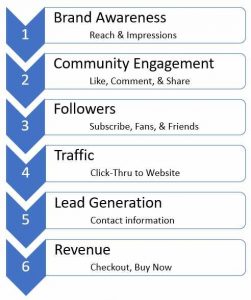Learn what an agile, customer-centric culture means, why leadership support matters and how organizations can work toward this goal.
This is the last of a four-part series on the North Star goals that set category leaders apart from their peers. You can find Part 1 (one-to-one, omnichannel personalization) here, Part 2 (first-party customer view) here and Part 3 (customer lifetime value model) here.
It takes a fully-functioning team across multiple disciplines to create successful marketing results. While an individual or two may stand out, the collective strategic work is what achieves winning and sustainable ROI. Long-term success depends on supportive leadership and nimble teams that keep up with changing times while building valuable lifetime customers.
The final part of this series tackles what an agile, customer-centric culture means, why leadership support matters and how organizations can work toward this goal.
The components of an agile, customer-centric culture
Culture
Whereas values are principles and goals that guide strategies and are often aspirational, culture is the outcome of shared values, goals and practices within an organization.
In other words, while values are how a company describes its ideals and standards for interacting with customers and employees, culture is the way work is actually done. When the pressure is high or priorities are competing, culture is how work gets prioritized, performed and evaluated.
Culture isn’t static, either. How work gets done — or needs to get done — may shift depending on where a company is in its growth and maturity or the nature of competition or innovation in its sector.
For instance, a startup may benefit from an extremely collaborative and highly innovative culture in its early stages. Over time, additional structure and a stronger focus on sales and competitive marketing may be needed. Thus, while an organization’s founding values may not change, how those values are interpreted and practiced may need to evolve for practical or strategic reasons.
Becoming customer-centric
Customer-centricity is an organization’s continual focus on improving the customer experience, with a shared understanding from the top down and bottom up that doing so will improve business performance. This means every employee can see their role in serving and creating better customer experiences.
But being customer-centric doesn’t mean the company doesn’t care about its employees. The most successful companies find a way to do both in a manner that reinforces each other. Employees are motivated to create great customer experiences and are rewarded when they achieve that.
Thus, the foundational element of customer-centricity ensures everyone is aligned with the customer’s interests. By doing so, the company succeeds when customers have a better experience and buy more or often.
Agility in company culture
You may be familiar with Agile as a set of principles and practices for software engineering or even marketing work in organizations. Scrum and Kanban are often used to organize and manage project work in iterative cycles (or the Scaled Agile Framework at the organizational level). While it makes sense for projects and ongoing marketing activities, what exactly is an agile culture?
An agile culture means keeping an openness to change and an appreciation for making decisions subject to evaluation and evolution. It can take different forms, but one common earmark is encouraging experimentation and learnings over fear that everything must be right on the first try. This openness to learning and willingness to accept failure to gain insights may seem strange to some. Still, organizations that embrace such culture can move rapidly because every misstep is a learning moment.
Thus, an agile culture is built for flexibility today and in the future. By adapting, adjusting and learning through successes and failures, an agile culture can lead organizations to quicker — and greater — success.
What is leadership’s role in customer-centricity?
Many factors make an agile, customer-centric culture, but a key component is the leadership’s role in creating, supporting and maintaining it. Leaders set behavioral standards and enforce them through their actions, the activities they reward and the things they overlook.
For instance, mixed messages are sent if an organization claims to be customer-centric, but leaders only reward employees who cut costs at the expense of customer experience. The public message is “we love our customers,” yet leadership only supports customers when they don’t involve other business objectives like profitability or efficiency.
That said, it’s a different story when efficiency is used to benefit the customer. What leaders emphasize matters. If there is a direct line between creating profitability and efficiency and benefiting the customer, leaders can have the best of both worlds. Leadership often fails when they don’t connect the dots for their team members.
Ultimately, leadership plays a vital role in agile, customer-centric organizations because they reinforce the behaviors making up the culture. They also demonstrate to employees that actions to achieve company objectives can align with customer needs.
How does an organization get started?
Building or changing a culture isn’t going to happen overnight, but shifting toward agility and customer-centricity is possible with leadership buy-in. Leaders must start addressing these key areas.
Prioritization
It is never enough to say you are a customer-centric organization or claim your teams are nimble to adapt to internal or external changes. What gets prioritized determines the culture and behaviors in an organization.
De-prioritizing customer-centric activities or initiatives sends a clear message that even though leadership claims to want one thing (customer-centricity), those efforts take a back seat to other priorities when push comes to shove.
Resistance to change
As much as your culture may embrace agility, humans naturally resist continual change. Some things make it more manageable, such as:
- Having a reason and purpose behind the change so it’s easier to understand.
- Involving your team in planning the change. This increases the likelihood of buy-in, participation and championing to others within the organization.
Consistent messaging
Just as you send on-brand messages to customers, cultural change within an organization requires consistent communication. Don’t just assume employees only need to hear something once to get on board or understand its meaning instantly.
Engage in consistent communication campaigns internally. This builds an environment and culture with an agile, customer-centric focus enough to propel your brand as a category leader.
Additionally, start by building an appreciation for experimentation and learning. Remember, not every experiment needs to yield positive results to teach valuable lessons. Leadership must support their teams’ growth, even without achieving desired outcomes 100% of the time.
Set up your organization for long-term success
As you’ve undoubtedly seen in your career, good ideas are not enough. It takes a great team to do excellent work and continuously improve in a dynamic and competitive environment.
Building an agile, customer-centric culture sets your brand up for success. When you continually focus on customers and create a motivating and rewarding work environment, your organization will stand out.
The post North Star goals for category leaders: Agile, customer-centric culture appeared first on MarTech.
MarTech(5)




